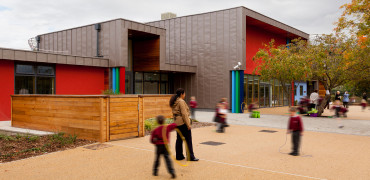Although the focus of the construction industry remains on housebuilding given the Government’s priority for new homes, a new report shows another significant challenge is starting to bite.
Research from Scape Group, the public sector procurement specialist, has revealed that an additional 435,646 pupils will be joining the UK’s secondary school system in 2020, which would require over 14,500 additional secondary classrooms across the country.
Scape’s report, The Secondary School Places Challenge, shows the equivalent of 14,522 secondary school classrooms would need to be built over the next three years to ensure we have enough school places, which would equate to over 400 brand new 1,050 pupil secondary schools across the country.
The challenge for the industry is not only to ensure we deliver modern classrooms to meet this demand, but that we also do so in a sustainable way
The report provides a timely warning as many are already claiming a skills crisis, the rising cost of raw materials and on-going problems with investment and planning are jeapordising efforts to meet the Government’s housebuilding targets.
Although the greatest school building requirement will be in England (13,337 classrooms), 527 classrooms would also be required in Scotland, 340 in Wales and 318 in Northern Ireland, to meet the projected growth in secondary school pupils.
Significant pressure
Mark Robinson, Scape Group Chief Executive, comments: “Secondary school pupil numbers are set to rise significantly and there is a real risk that if we do not increase the output of new secondary school classrooms there will be significant pressure on places across the UK.
"Such is the scale of the projected increase in secondary school pupils that the Government should now seek to develop a National School Building Strategy that brings together the Department of Education, local and regional government, and industry.
"We must ensure there is a joined-up approach that embraces modern methods of construction such as modular and offsite techniques, which can deliver schools quickly and cost-effectively.
“The Government must view this situation as a priority - it is critical that we do not fail our children by not providing enough new secondary school places.
"A collaborative approach between public and private sectors and Local and Central Government is key to bridging the school capacity gap – and a cohesive national strategy on modular for new schools could go a long way in reducing the amount of time it would take to provide areas with much-needed school places. However there needs to be significant investment behind this for it to have the desired effect.”
The challenge for the industry is not only to ensure we deliver modern classrooms to meet this demand, but that we also do so in a sustainable way that will help the country achieve the ambitious carbon reduction targets that we have legally signed up to.
Paul Groves is Editor of Specification Magazine.



